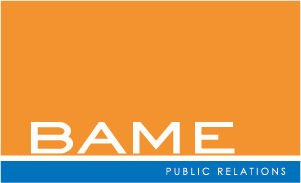The New Shade of Public Relations: Content Marketing
Every year, Pantone Inc. a New Jersey-based company that is known for its influential color matching system, announces its “Color of the Year.” Although Pantone is technically just a system for standardizing colors across every medium, the annual selection of the “Color of the Year” is known to influence fashion and decorating decisions for years after it is made. For 2016, Pantone did something unprecedented and chose not a single color but a mixture of colors: a combination of Rose Quartz (a pink) and Serenity (a blue) that it says “challenges traditional perceptions of color association.”
If I had to choose a “PR Word of the Year” for 2016, I would also pick a blend to challenge the perceptions of what PR is perceived to be: I would choose “Content Marketing.” Like the color combination, this is a high-value concept that challenges traditional perceptions. We usually think of content as something substantive that adds to a reader’s knowledge or is intriguing to the the reader. We think of marketing in this context as composed of advertising messages that are not substantive but are designed to convince the audience members to buy something. Which begs the question: Can they be blended successfully?
The answer isn’t just “yes” it is they have to be. They need to be blended because advertising is in crisis. Consumers have become very good at bypassing marketing messages (skipping commercials with a DVR, ignoring online advertising). So the best way to reach an audience is to provide something that immerse themselves in, something they don’t want to skip. Enter content marketing.
The Content Marketing Institute defines content marketing as “a strategic marketing approach focused on creating and distributing valuable, relevant, and consistent content to attract and retain a clearly-defined audience — and, ultimately, to drive profitable customer action. . . . Content marketing’s purpose is to attract and retain customers by consistently creating and curating relevant and valuable content with the intention of changing or enhancing consumer behavior.” (emphasis added).
Professional services marketing, including legal marketing, is no exception to these principles. A cacophony of advertising slogans and brands pervades the law firm world, and savvy law firms know that providing their current and prospective clients with useful content is a better way to reach them. That is why blogs, client alerts, LinkedIn posts, legal conferences, and other content-rich efforts have become the thing to do.
A current survey of major law firms by Greentarget, a strategic communications consulting company, indicates that only 25 percent of major law firms now have a content marketing strategy – but that 47 percent plan to put such a strategy into place in the next 12 months. The firms that get a jump in the content marketing world and do it right will be the ones that prosper. “Content marketing” is a unique combination that forces the status quo to rethink the why and how of what has been historically seen as separate efforts and will work as well as those successful “Colors of the Year” work in fashion.





